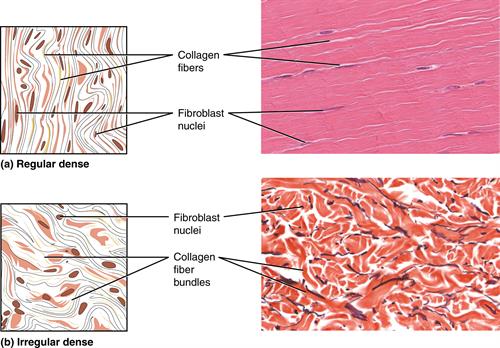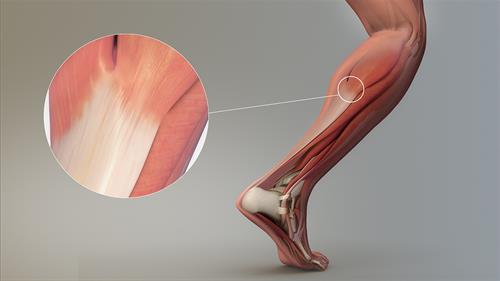PDF chapter test TRY NOW
Difference between bone and cartilage:
Properties | Bone | Cartilage |
Texture | Hard | Soft |
Elasticity | Non - elastic | Elastic |
Flexibility | Tough | Flexible |
Cells | Cells are called Osteocytes | Cells are called Chondrocytes |
Matrix | Matrix is made up of calcium and phosphate | Matrix is made up of protein and sugar |
Function | It provides shape and structural framework to the body. | Cartilage provides a smooth, flexible, friction-free surface that allows our joints to work and our bones to move against each other painlessly. |
Dense connective tissue:
In the previous topic, we have seen that bones act as mechanical support and facilitates movement. Now the question arises,
- How are bone linkages stable with all their movements?
- How are muscles enabling the bones for movement?
It is by means of connective tissues viz., ligaments and tendons, respectively. These tissues are made up of dense fibres and come under the category of dense connective tissues.

Dense connective tissues
It is a type of fibrous connective tissue densely packed with fibres and fibroblasts. These are the major component of tendons and ligaments.
Tendon:
Tendon is another type of dense connective tissue, which join skeletal muscles to bone. These are strong and inelastic, cord-like structures made up of white fibrous tissue. They are with great strength but limited flexibility ( inelastic).

Tendon
Function: Tendons on each side of a bone joint attach to muscles that control the joint's movement.
Functions of ligament and tendon
Ligaments:
It is also a dense fibrous connective tissue. Two bones are connected by another type of connective tissue called a ligament. This tissue is highly elastic and has considerable strength with a low blood supply. Ligaments contain a minimal amount of matrix.

Ligament
Functions:
- Ligaments strengthen joints and permit normal movement. Their overstretching leads to sprain (stretching or tearing of ligaments).
- Even though ligaments are slightly stretchy, they are arranged in crossing patterns to prevent the joint from becoming loose.
- Ligaments that surround the joints are to provide support and limit the joint's movement.
Do you know:
- Yellow fibres of elastin and white fibres of collagen joins together forms the matrix of protein fibre.
- Nanofibres: Sharpey's fibres, also called bone fibres, are the minute fibres of the tendon, which enter into the peristomium of bone.
- Aponeurosis is similar to a tendon, but fibres are interwoven and thinner.
Important!
Reference:
https://www.atlantaequine.com/pages/client_lib_tendonvsligament.html
https://upload.wikimedia.org/wikipedia/commons/6/66/Tendon_-_very_high_mag.jpg
https://upload.wikimedia.org/wikipedia/commons/2/20/Ligament.jpg
https://upload.wikimedia.org/wikipedia/commons/e/ea/Magnified_view_of_a_Tendon.jpg
https://upload.wikimedia.org/wikipedia/commons/5/55/411_Reg_Dense-Irregular_Dense.jpg
